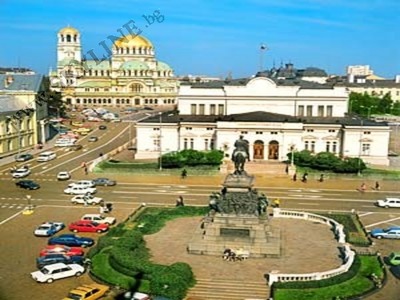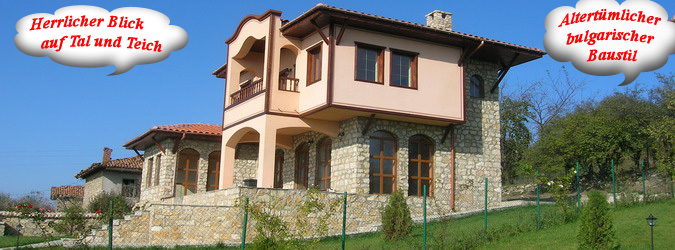
Sofia, die Hauptstadt von Bulgarien, hat eine tausendjährige Geschichte. Viele Völker und Stämme haben durch die Jahrhunderte zu ihrem Charm, Vielfalt und Eigentümlichkeit hinzugefügt. Der Stamm der Traken Serdi hat sich im 7.Jh.v.Chr. hier niedergelassen und gab der Stadt ihren ersten Namen - Serdika. Die Byzantiener nannten es Triaditsa und die Slaven - Sredets. Ihren heutigen Namen Sofia bekam sie im 14.Jh.n.Chr. nach dem gleichnamigen Basilikum St. Sofia, gelegen im Zentrum der Stadt. Im 3.Jh.n.Chr. wurde Sofia(Serdica) zur Hauptstadt der römischen Provinz Inner Dacia.
Ein Grossteil der Altstadt Serdika befindet sich heute unter den modernen Gebäuden der Stadtmitte, so z. B. das einstige Rathaus liegt unter dem Sheraton Hotel, mehrere Basiliken sind unter dem Nationalen Museum der Geschichte, das Hotel "Rila" ist gebaut über den Ruinen der Römischen Residenz. Im Jahr 1382 war Sofia von den Osmanen besetzt und wurde zum Zentrum vom Rumelian Beylerbeyship. Erst 1879, nach der Befreiung Bulgariens von der Osmanischen Fremdherrschaft, wurde Sofia wieder einmal die Hauptstadt von Bulgarien oder wie es damals hiess dem Dritten Bulgarischen Reich.
Die äussere Erscheinung der Stadt änderte sich schnall von oriantalisch zu europäisch. Viele Strassen, Gebäude, Parkanlagen haben sich im Baustil vom Anfang des 20. Jh. erhalten. Zwischen 1879 und 1939 vergrösserte sich die Einwohnerzahl von Sofia von 20 000 auf 300 000. Heute ist sie 1 250 000.
Sehenswürdigkeiten in Sofia:
• ALEXANDER NEVSKI DOM – fertiggestellt wurde er im Jahr 1912 completed in 1912 in honour of the Russian casualties of the 1877- 1878 War of Liberation from Ottoman Rule. Gold-domed, it is the finest piece of architecture in the Balkans. Craftsmen and artists from 6 countries worked on the five-aisle church in the course of 30 years and created real masterpieces of icons, frescoes, murals and huge chandeliers. A superb collection of icons – the best in Bulgaria – can also be seen in the Crypt.
• ROTUNDA OF ST. GEORGE - A brick building from the 4th century in the courtyard behind the Sheraton Hotel, adorned with finely preserved early medieval frescoes. There are also remains of a C2 street and other Byzantine ruins.
• ST. SOFIA CHURCH – The 4th-6th century basilica was built during the reign of Justinian. It has survived intact with 1600- year-old mosaic details and towards the end of the 14th century gave the city its name.
• THE NATIONAL PALACE OF CULTURE – The biggest Congress Centre in the Balkans. It is located in the centre of the city and faces the Vitosha Mountain.
• THE CHURCH OF ST. NEDELYA – Built in medieval times and known as the Church of the Blessed Sveti Kral. The current building was reconstructed after 1925 when it was almost completely destroyed by a bomb explosion.
• SOFIA UNIVERSITY – The country's most prestigious university.
It was built a decade after Sofia became Bulgaria's capital in 1879 with funds bequeathed by the brothers Evlogi and Christo Georgiev.
• DRAGALEVTSI – A suburb in the woods at the foot of Mount Vitosha. About 3 km further on is DRAGALEVTSI MONASTERY, founded during the reign of King Ivan Alexander. Frescoes date back to the 15th century.
• BOYANA – A suburb at the foot of Mount Vitosha, notable for the BOYANA CHURCH, built in the C11. Frescoes are claimed to be among the oldest and most interesting examples of East European Medieval art. Like Rila Monastery, the BOYANA CHURCH has been listed by UNESCO as a part of the world s cultural heritage.
• MOUNT VITOSHA – It has become very much a part of Sofia owing to its accessibility by means of the cabin lifts at Knyazhevo and Simeonovo. Cherni Vrah, the highest point, gives wonderful views over the whole region. The winter ski-resort Aleko lies at 1868 m and the ski season lasts from early December until late spring. The beautiful scenery makes the whole area attractive throughout the year.








